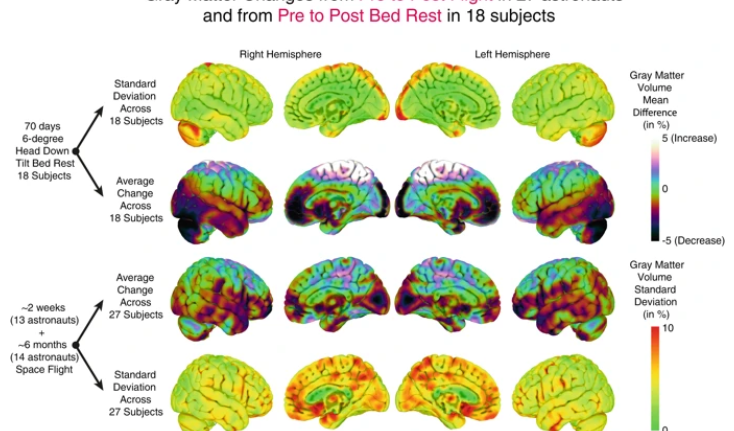Humans undergo extensive sensorimotor adaptation during spaceflight due to altered vestibular inputs and body unloading. No studies have yet evaluated the effects of spaceflight on human brain structure despite the fact that recently reported optic nerve structural changes are hypothesized to occur due to increased intracranial pressure occurring with microgravity. This is the first report on human brain structural changes with spaceflight. We evaluated retrospective longitudinal T2-weighted MRI scans and balance data from 27 astronauts (thirteen ~2-week shuttle crew members and fourteen ~6-month International Space Station crew members) to determine spaceflight effects on brain structure, and whether any pre to postflight brain changes are associated with balance changes. Data were obtained from the NASA Lifetime Surveillance of Astronaut Health. Brain scans were segmented into gray matter maps and normalized into MNI space using a stepwise approach through subject specific templates. Non-parametric permutation testing was used to analyze pre to postflight volumetric gray matter changes. We found extensive volumetric gray matter decreases, including large areas covering the temporal and frontal poles and around the orbits. This effect was larger in International Space Station versus shuttle crew members in some regions. There were bilateral focal gray matter increases within the medial primary somatosensory and motor cortex; i.e., the cerebral areas where the lower limbs are represented. These intriguing findings are observed in a retrospective data set; future prospective studies should probe the underlying mechanisms and behavioral consequences. Brain structural plasticity with spaceflight
For more information: https://www.nature.com/articles/s41526-016-0001-9

